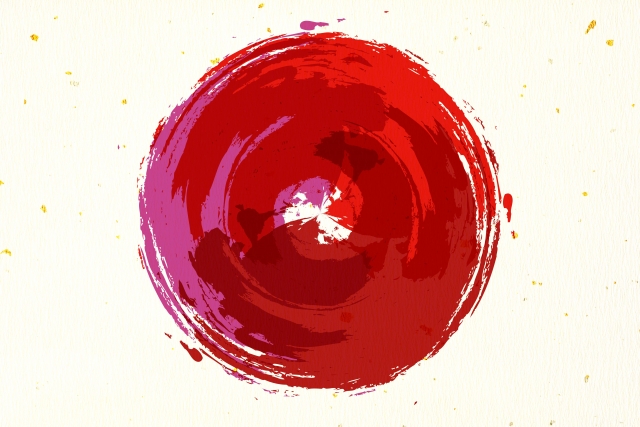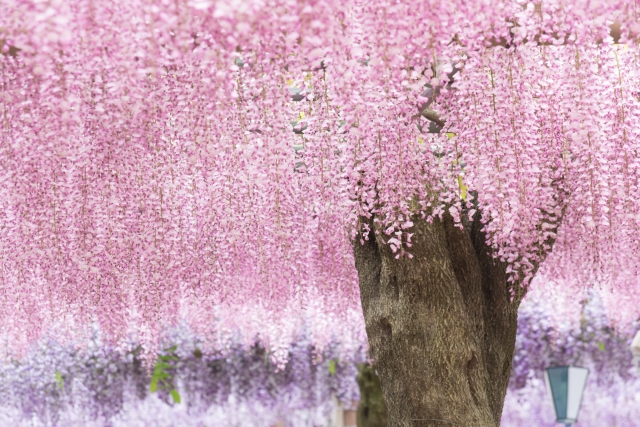Introduction

“Mr. Osomatsu” is a vibrant and hilarious reboot of the classic 1960s anime “Osomatsu-kun,” originally created by the legendary Fujio Akatsuka. This modern adaptation breathes new life into the series, presenting the beloved Matsuno sextuplets in an edgy and contemporary format that resonates with today’s audience.
The original “Osomatsu-kun” was a significant cultural phenomenon in its time, capturing the hearts of viewers with its unique brand of humor and endearing characters. Fast forward to the present, “Mr. Osomatsu” retains the charm of its predecessor while introducing bold and irreverent comedic elements that cater to a new generation. This transformation from a family-friendly show to a more mature and satirical series is a testament to its ability to evolve while staying true to its roots.
At the heart of “Mr. Osomatsu” are the six mischievous Matsuno brothers: Osomatsu, Karamatsu, Choromatsu, Ichimatsu, Jyushimatsu, and Todomatsu. Each brother has a distinct personality, leading to a dynamic and unpredictable mix of interactions and adventures. The series focuses on their daily lives, filled with absurdity, rivalry, and outlandish schemes, as they navigate the challenges of adulthood while remaining quintessentially childish.
Osomatsu, the eldest, is a laid-back slacker who often leads the brothers into trouble. Karamatsu, with his exaggerated coolness, frequently finds himself the butt of jokes. Choromatsu, the self-proclaimed responsible one, struggles to keep his siblings in line but often ends up as chaotic as the rest. Ichimatsu, the gloomy and sarcastic brother, provides a dark humor that contrasts sharply with Jyushimatsu’s hyperactive and eccentric behavior. Todomatsu, the youngest, uses his charm and wiles to navigate the chaotic household, often manipulating situations to his advantage.
The return of “Mr. Osomatsu” to television was met with enthusiasm and curiosity. Its modernized format includes sharp social commentary, pop culture parodies, and breaking the fourth wall, making it a unique viewing experience. The show tackles contemporary issues and trends with a satirical edge, all while maintaining the slapstick humor and heartwarming moments that fans of the original series cherished.
“Mr. Osomatsu” not only pays homage to Fujio Akatsuka’s original work but also reinvents it for a new era, proving that the antics of the Matsuno brothers are timeless. Whether you’re a longtime fan of “Osomatsu-kun” or a newcomer to the series, “Mr. Osomatsu” offers a comedic ride that is both nostalgic and refreshingly original.
Plot Overview

“Mr. Osomatsu” revolves around the daily lives of the six Matsuno brothers: Osomatsu, Karamatsu, Choromatsu, Ichimatsu, Jyushimatsu, and Todomatsu. These sextuplets, originally from the classic 1960s anime “Osomatsu-kun,” have been reimagined in a modern setting, bringing with them a unique blend of humor and satire that has captivated audiences worldwide.
The series is characterized by its episodic structure, where each episode presents a new and often absurd scenario involving the brothers. Despite their adult age, the Matsuno brothers exhibit a remarkable lack of maturity, leading to countless comedic situations. From failed job hunts to outrageous schemes to win the affection of their love interest, Totoko, their antics are endlessly entertaining and unpredictable.
One of the standout episodes is the series premiere, which reintroduces the brothers in a hilariously meta fashion, poking fun at their original personas and the anime industry itself. Another memorable arc involves the brothers attempting to become successful in various ways, only to fail spectacularly each time. This arc not only highlights their individual quirks but also their inability to function as responsible adults, adding to the show’s charm.
The “Iyami’s Counterattack” arc is another notable storyline, featuring the iconic character Iyami, who devises elaborate plans to outsmart the brothers but inevitably ends up in even more ridiculous predicaments. This arc showcases the series’ ability to balance episodic humor with ongoing character dynamics, maintaining a cohesive narrative thread throughout.
“Mr. Osomatsu” excels in blending humor with sharp social commentary. The show frequently parodies popular culture, contemporary societal issues, and even its own status as an anime reboot. This self-awareness adds a layer of depth to the comedy, making it both entertaining and thought-provoking. Episodes often include over-the-top gags, slapstick humor, and clever dialogue, ensuring that the audience is kept engaged and amused.
While primarily episodic, the series does weave in overarching narratives that provide continuity and development for the characters. For instance, the evolving relationship between the brothers and their interactions with recurring characters like Totoko, Iyami, Chibita, and the Matsuno parents add depth to the storyline. These relationships, while often comically exaggerated, offer moments of genuine sentiment and growth, creating a balanced viewing experience.
“Mr. Osomatsu” also doesn’t shy away from exploring more serious themes, such as identity, family, and the struggle to find one’s place in the world. These themes are often presented through the brothers’ comedic failures and misadventures, making the show relatable while maintaining its humor.
In summary, “Mr. Osomatsu” masterfully balances episodic content with overarching storylines, delivering a unique blend of humor and satire. The show’s ability to entertain while providing sharp social commentary ensures its place as a standout series in the modern anime landscape. Whether through its laugh-out-loud moments or its more reflective themes, “Mr. Osomatsu” offers a viewing experience that is both enjoyable and thought-provoking.
Character Analysis

“Mr. Osomatsu” features a colorful cast of characters, each with distinct personalities that contribute to the show’s dynamic and humor. The main characters are the Matsuno sextuplets: Osomatsu, Karamatsu, Choromatsu, Ichimatsu, Jyushimatsu, and Todomatsu. Let’s dive into their individual traits and how they add to the series.
Osomatsu is the oldest brother and the de facto leader of the group. Despite his position, he is incredibly lazy and irresponsible. His carefree attitude often leads the sextuplets into chaotic situations. Osomatsu’s love for gambling and drinking adds to his immature persona, making him a key source of the show’s humor.
Karamatsu, the second brother, is flamboyant and self-absorbed. He believes himself to be incredibly cool and attractive, often dressing in flashy clothes and striking dramatic poses. His overconfidence and frequent attempts to act like a suave hero usually end in embarrassment, much to the amusement of his brothers and the audience.
Choromatsu is the most serious and responsible of the sextuplets, often seen as the “voice of reason.” He is ambitious and has a strong sense of duty, but his neurotic tendencies and frequent panicking undermine his efforts. Choromatsu’s obsession with idols and his aspirations to be a functioning member of society provide a comedic contrast to his more grounded nature.
Ichimatsu, the fourth brother, is introverted and gloomy. He has a dark sense of humor and often speaks in a monotone voice. Despite his aloof exterior, Ichimatsu cares deeply for his family and has a particular fondness for cats. His interactions with his brothers, especially Jyushimatsu, reveal his softer side, adding depth to his character.
Jyushimatsu, the fifth brother, is hyperactive and eccentric. His boundless energy and childlike innocence make him one of the most endearing characters. Jyushimatsu’s unpredictable behavior and nonsensical speech patterns often lead to bizarre and hilarious situations. His unwavering positivity and unique outlook on life bring a refreshing dynamic to the group.
Todmatsu, the youngest brother, is charming and manipulative. He prides himself on being the most “normal” of the sextuplets and often tries to distance himself from their antics. Todomatsu’s vanity and tendency to play the “cute” card to get what he wants add a layer of complexity to his character. His interactions with his brothers often highlight his cunning and resourcefulness.
In addition to the Matsuno brothers, “Mr. Osomatsu” features a host of notable supporting characters. Totoko, the brothers’ love interest, is a self-absorbed aspiring idol who frequently rebuffs their advances. Her interactions with the sextuplets provide a recurring source of humor.
Iyami, another iconic character, is a con artist with an exaggerated manner of speaking and a penchant for elaborate schemes. His rivalry with the Matsuno brothers often results in comedic conflicts.
Chibita, a former delinquent turned oden vendor, is another significant character. Despite his rough exterior, Chibita has a soft spot for the brothers and often finds himself reluctantly involved in their schemes.
The Matsuno parents also play a crucial role, providing a grounding presence amidst the chaos. Their interactions with their sons highlight the family dynamics and add depth to the overall narrative.
In summary, the distinct personalities of the Matsuno sextuplets and the supporting cast create a rich tapestry of comedic and heartfelt moments in “Mr. Osomatsu.” Each character’s unique traits and interactions contribute to the show’s dynamic, making it a memorable and entertaining experience for viewers.
Themes and Humor

“Mr. Osomatsu” masterfully explores a variety of themes that resonate with audiences through its blend of humor and genuine emotion. One of the central themes is sibling rivalry. The Matsuno sextuplets, each with distinct personalities, often find themselves competing against one another in absurd and hilarious ways. Whether it’s vying for the attention of their crush, Totoko, or simply trying to prove who’s the best, their antics are a constant source of comedy.
Another major theme is unemployment. The brothers, all in their late twenties, are still unemployed and living at home, which is both a humorous and poignant reflection of modern societal issues. Their lack of direction and ambition is a recurring joke, but it also underscores the struggles many young adults face in finding their place in the world. This theme is approached with a mix of satire and empathy, making it relatable to a broad audience.
The absurdities of modern life are another focal point of the series. “Mr. Osomatsu” uses satire and parody to comment on various aspects of contemporary society. From the idol culture obsession to the ridiculousness of certain social norms, the show cleverly exaggerates these elements to highlight their absurdity. The creators often employ meta-humor, breaking the fourth wall and making self-referential jokes that add a layer of complexity and wit to the narrative.
One of the show’s strengths is its ability to balance light-hearted comedy with moments of genuine emotion. While much of the humor is over-the-top and slapstick, there are episodes that delve into more serious and heartfelt territory. For example, episodes that explore the brothers’ childhood memories or their bond with their parents provide a deeper understanding of their characters and add emotional weight to the story. These moments are skillfully woven into the narrative, ensuring that they complement rather than overshadow the comedic elements.
“Mr. Osomatsu” also excels in its use of parody and satire. The show often parodies popular anime, TV shows, and cultural phenomena, creating humor that is both entertaining and thought-provoking. This approach allows the series to engage with a wide range of viewers, from casual fans to those well-versed in anime culture. The satire is sharp and insightful, often pointing out the ridiculousness of certain trends and behaviors in a way that is both humorous and critical.
Meta-humor is another tool the show uses to great effect. Characters frequently acknowledge their status as anime characters, making jokes about the production process, fan expectations, and even the passage of time between seasons. This self-awareness adds a unique charm to the series and creates a special bond between the show and its audience.
In conclusion, “Mr. Osomatsu” deftly combines themes of sibling rivalry, unemployment, and the absurdities of modern life with a mix of satire, parody, and meta-humor. This blend of comedic styles ensures that the show is not only funny but also thought-provoking and emotionally resonant. By balancing light-hearted comedy with genuine emotional moments, “Mr. Osomatsu” offers a rich and engaging viewing experience that appeals to a diverse audience. Its clever use of humor and insightful commentary on contemporary issues make it a standout series in the world of anime.
Cultural Impact and Reception

“Mr. Osomatsu” has made a significant cultural impact since its return to television, both in Japan and internationally. This reboot of the classic 1960s anime “Osomatsu-kun” has been warmly received by audiences, and its modern, edgy humor has resonated with a wide range of viewers. The series’ popularity is evident in the various ways it has influenced pop culture, from merchandise to collaborations.
In Japan, “Mr. Osomatsu” quickly became a cultural phenomenon. The show’s unique blend of humor, satire, and nostalgia captured the hearts of many viewers, leading to a surge in merchandise sales. Fans can find everything from plush toys and keychains to apparel and stationery featuring their favorite Matsuno brothers. The show’s characters, with their distinct personalities and quirks, have become icons in their own right, driving the success of various product lines.
The series has also sparked numerous collaborations with other brands and media franchises. These collaborations have ranged from themed cafes and food items to special events and promotional campaigns. For instance, “Mr. Osomatsu” has teamed up with popular fashion brands, creating limited-edition clothing lines that blend the show’s humor with contemporary fashion. These collaborations have not only boosted the show’s visibility but also expanded its fanbase.
Internationally, “Mr. Osomatsu” has garnered a dedicated following. The show’s humor, while deeply rooted in Japanese culture, has a universal appeal that transcends language barriers. Streaming platforms and fan communities have played a crucial role in spreading the show’s popularity beyond Japan. Subtitled episodes allow international viewers to enjoy the antics of the Matsuno brothers, contributing to the show’s global success.
Critical reception of “Mr. Osomatsu” has been largely positive. The series has been praised for its clever writing, character development, and ability to balance absurd comedy with moments of genuine emotion. It has received several awards, further cementing its status as a standout anime. For example, the series won the Animation of the Year award at the Tokyo Anime Award Festival, highlighting its excellence in storytelling and animation.
The fanbase of “Mr. Osomatsu” is both passionate and creative. Fans regularly produce fan art, fan fiction, and cosplay inspired by the series. Social media platforms and fan conventions provide spaces for fans to connect, share their creations, and celebrate their love for the show. This vibrant community contributes to the series’ enduring popularity and cultural impact.
In terms of broader cultural influence, “Mr. Osomatsu” has revived interest in Fujio Akatsuka’s original work, introducing a new generation to his comedic genius. The show’s success has also demonstrated the potential of reboots to breathe new life into classic series, making them relevant for contemporary audiences. By blending traditional elements with modern sensibilities, “Mr. Osomatsu” has set a benchmark for future anime reboots.
In conclusion, “Mr. Osomatsu” has made a lasting impact on both Japanese and international pop culture. Its blend of humor, nostalgia, and modernity has resonated with audiences, leading to widespread acclaim and a devoted fanbase. The series’ success is reflected in its extensive merchandise, collaborations, and critical recognition. As “Mr. Osomatsu” continues to entertain and inspire, it stands as a testament to the enduring appeal of well-crafted comedy and the power of nostalgic reimagination.








